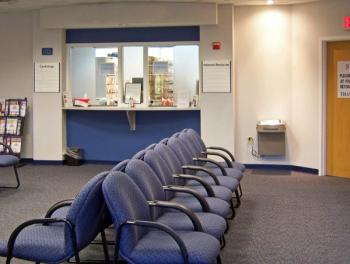
Fattening the bottom line by helping patients lose weight
A profile of one practice that successfully added weight loss as an ancillary service.
Ellyn Levine, MD, of the Center for Family and Health in San Diego, California, has found an ancillary service that addresses a need in the community, has benefited 500 patients in four years, and has added six figures of income per year to her practice. She became a health coach for Take Shape For Life (TSFL).
“We have an obesity crisis in America and I truly believe that TSFL and everything about it is what we (physicians) could be doing, what we should be doing, and can make a huge dent if only people know about it,” Levine says. “For the majority of medical conditions I see, weight is often the underlying factor. So it’s amazing when you treat the origin how everything falls into place. I don’t know how the primary care physician can practice medicine without having a true program to help overweight patients.”
Levine heard about the program when a few of her colleagues went on it. Their weight loss was so successful that her physician assistant (PA) asked if they could implement the program with their patients. “My colleagues had lost 30 pounds and started putting patients on the program and my whole office just transformed overnight,” Levine says.
Initially, Levine wanted her PA to handle the program. “I thought it was just one more thing to add to my plate and I would have to learn something else,” she says. “I told my PA, ‘Why don’t you handle the weight loss part (of the business)?’ ”
The first patient lost 80 pounds in 5 months. Another lost 60 pounds. “These are patients I’d seen for a long time and they had made many attempts at weight loss,” Levine says. “So I put patients on the program and saw the same type of successes. I never in a million years saw this coming.”
About 25% of Levine’s patients have tried the program. It uses meal replacement as a tool for weight loss, averaging $11 a day for five meals. But it also has a Web site that gives weight loss tips, recipes and tracking, as well as a wide variety of tools focused on keeping the weight off.
Achieving optimal health
“It isn’t just a weight loss program,” Levine says. “It’s a health-coaching program that helps people lose weight, feel better and achieve their optimal health.”
Levine’s job as a health coach is to introduce all of the tools patients would need to keep the weight off, so in transition, as they are adding more calories, they are developing a maintenance plan. They are also urged to begin a tailored exercise program. TSFL expects Levine to support the patients in their goals by spending time teaching and helping them. “The company pays me for that. I get paid $100 a person for every month that they are on the weight loss phase of the program. I get to go beyond the scope of a 15-minute office visit because I’m being compensated. I call patients on weekends and I email them. I’m working one-on-one with them, and I think it’s the direction that physicians need to go with their patients,” she says.
Levine is not only involved with helping patients. She also promotes TSFL to other physicians, which adds to her compensation. Based on the prevalence of patients being overweight and obese and in need of a weight loss program, physicians can-without a lot of effort-earn $3,000 a month with this program alone, she says.
One physician she told about TSFL is Jeffrey K. Pearson, DO, of Medicine-in-Motion, in San Marcos, California and a Medical Economics editorial board member.
“I got pulled into this kicking and screaming,” Pearson says. “I started referring patients to Dr. Levine. The trouble was that she is across town and my patients didn’t want to travel that far.”
He decided to learn about the program so he could keep his patients happy. But before he recommended it to patients, he wanted to give it a try himself. “I dropped 65 pounds in 4 months,” he says, “and I’ve kept it off for a year and a half.”
His first step in implementing TSFL was becoming certified as a health coach at a cost of $200.
“I don’t charge patients for being their coach. I spend an hour to an hour and a half coaching a patient, and TSFL reimburses me for my time,” Pearson says. “Doctors make a very good living at it. But I didn’t do this just to make money. I did this because it was really helping people to lose weight. But it turned out that it was a nice extra income.”
Both doctors went outside of their comfort zone and took a chance on the program. It has paid off in added income but most importantly in helping patients.
“So it’s made medicine fun because it’s not just sick care and disease management all of the time,” Levine says. “It’s truly healthcare. I’m practicing health, nutrition, wellness and fitness, and it’s just been incredible.”
Newsletter
Stay informed and empowered with Medical Economics enewsletter, delivering expert insights, financial strategies, practice management tips and technology trends — tailored for today’s physicians.















